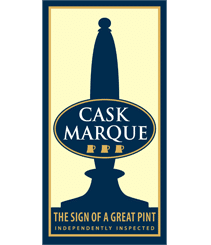I bet you all have a friend or a colleague who tells you they don’t like beer? I know. It’s unfathomable to you and I. But these mad, sad fools need our guidance because their experience or perception of beer has probably been a poor one. We know that not all beer is the same, we know that saying you don’t like beer is akin to saying you don’t like food.
So, in this new series from Annabel Smith, in-house Beer Sommelier at Cask Marque, we’re going to take a light hearted look at a range of beer styles, and help you persuade the uninitiated masses to try a tipple.
*Spoiler alert: some of these beer styles are NOT cask. Gulp!
Pale Ales
Pale ale is a remarkably diverse beer style. Loosely speaking, the term denotes a beer that is golden to copper in colour; bitter; and brewed using a top fermenting ale yeast. It includes a variety of different types of beer, including bitter, extra special bitter (ESB), golden ale, saison, India Pale Ale (IPA), Double India Pale Ale (DIPA), American Pale Ale (APA) and, of course, those beers simply labelled pale ale.
Where Did Pale Ales Come From?
Burton-upon-Trent, the famous brewing town, was the home of Pale Ale in the 19th century due to the quality of the local water, which has a high level of a mineral called gypsum that gives pale ales their distinctive ‘biscuity’ backbone.
Innovation and advances in technology during the Industrial Revolution enabled brewers to control the colour of the beer, and the result was an ale which was far lighter in colour than most of its predecessors, hence the name ‘pale ale’.
What Are The Differences?
British Pale Ale – British bitter – sometimes referred to as pale ale, especially in a bottle – has a fine balance between the bitter hops and sweet, biscuit malt.
Brand examples are: Fuller’s London Pride, Marston’s Pedigree, Timothy Taylors Landlord.
India Pale Ale – IPA’s were first developed during the 18th century in London for export to India, where it was drunk by the British colonialists who were crying out for decent beer as many of the local drinks had impurities or dangerously high levels of alcohol.
As beer did not travel well, the first batches sent from London to India (unsurprisingly) spoiled on the 6-month sea journey, until London brewer, George Hodgson, identified that if a beer was brewed with double the amount of hops, the antibacterial properties of the hops would prevent spoilage. Also brewing beer to a higher ABV would help preserve beer cargo on the long sea journeys – hence IPA was born.
Brand examples are: Marston’s Old Empire, Worthington’s White Shield, Thornbridge Jaipur.
American Pale Ale – American Pale Ales are a sub style of IPAs.
Brand examples are: Beavertown Gamma Ray, Stevens Point Pale Ale, Crafty Dan 13 Guns, Shipyard Pale Ale
Double IPA – These are big and bold! It has a booming hop aroma, a deep sweet body and then hefty bitterness at the end. The best are elegantly balanced between malt sweetness and huge hops. The worst taste like nail polish mixed with honey!!!!!
Brand Examples: Cloudwater DIPA, North Brewing DIPA, Thornbridge Halcyon, Magic Rock Mind Control
Characteristics
To Serve:
British pale ales have enough biscuit malt to COMPLEMENT roast beef, roast pork, sausages, grilled steaks, and lamb (especially Shepherd’s pie). The hop character cuts through salmon and fish and chips.
Indian and Mexican food are wonderfully COMPLEMENTED by hop-forward American-style IPAs. The citrusy, zesty hops CUT through chilli heat in creamy curries, and even complement the spices in carrot cake.
Intense APAs with their assertive, bright and zingy hops will CUT through any Mexican food (think Tacos, Quesadillas, chimichangas). The fresh lime and galangal elements in Thai and Vietnamese cuisine COMPLEMENT the hop.
Finally, Double IPA’s can handle big flavours. Fried chicken, roasted meats, belly pork and barbecue ribs. Strong cheese, double cheeseburger, burnt ends, jerk pork.
Like our beer styles blog? Read our ones on Stouts & Porters, Wheat Beer, Trappist & Abbey Ales and Lager.



